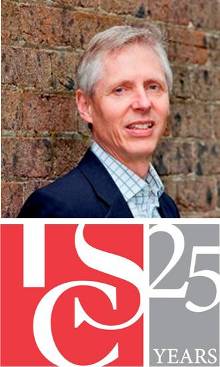Back to back conferences on like themes are always
interesting, if only to see how much stamina is required to keep engaged. Sydney has just hosted the Museums Australia Conference,
followed by Remix Sydney.
The former is self explanatory, the annual get together of
the local museum fraternity, always useful for catching up with old friends and
meeting new ones, but this year a bit predictable and uninspiring in
programming and discussions. Highlights for me were:
- Xerxes Mazda, formerly of the British Museum, currently at the Royal Ontario Museum and about to be head of collections for National Museums of Scotland. Xerxes is always worth listening to on how to maximise the visitor experience, by integrating exhibitions, education, web, publications, design, front of house, visitor research, marketing, membership, volunteers and programming.
- Mega museum project updates with Gunther Schauerte from the Humboldt Forum in Berlin and Michael Lynch on M+ in the West Kowloon Cultural District, Hong Kong. Large though these are, we should not forget the New Museum that is arising in Western Australia. I blogged about this when it was announced in July 2012, and amazingly the monies ($428m) still seem to be there and the project is gaining significant momentum with an opening scheduled in 2020.
I gave a paper boldly entitled 'Conservation in Museums –
Whereto from here?', inspired by my own perception of the journey that
conservation worldwide has undergone between the ICOM CC Conference in Sydney
in 1987 and 27 years on the same conference in Melbourne in 2014.
And interestingly it was Remix that turned out to be in many
ways a more appropriate forum for this discussion with the first session
asking ‘What functions of museums are best served by external providers?’ Remix
is a series of global summits on the future of cultural industries currently
taking place annually in London, New York City, Dubai and Sydney, which aims to
pull together cultural leaders, corporate directors, technologists and
entrepreneurs.
It was a buzzy place to be around, reinforcing how the world
of social media is fracturing at an ever increasing pace. With ever more
platforms and media to share content on, the move to video as a medium, and
mobile as the principal point of access, museums are scrambling to understand how to respond. Inevitably the focus on providing digital content
continues to drive decision making on funding, but with it came reinforcement
of the urge to see and value the real thing that is continuing to bring people
into cultural institutions in increasing numbers.
Pick of the conference for me was Seb Chan’s keynote on
the Future of Museums. Seb was at the Powerhouse Museum in Sydney for many
years before taking up the role of Head of Digital and Emerging Media at the Cooper Hewitt National Design Museum in New York, which has just reopened after a $81
million refurb. Described in the Atlantic as the museum of the future,
Seb has lead the charge at the Cooper Hewitt on integrating the digital
and the real seamlessly. He and his team have done this by ensuring:
- Everything on exhibition is also online, i.e. not just a representative proportion
- The online data provides a rich array of extra information, so offers significant extra value that can be accessed later
- Visitors select objects they find interesting by touching the label with an interactive pen they are provided with on entry
- These selections are then downloaded upon exit and can be accessed, researched and manipulated at home via a unique url on each ticket
- No time consuming downloading of an app, pre visit or upon arrival
- No privacy issues over requiring an email address
- This is a REALLY NEAT solution
What I came away with is that we are now seeing the next
iteration of visitor access through technology, the leader until now being MONA and the O. The ground breaking nature of the O is reflected in how long
it has taken to see it superseded, but look to the Cooper Hewitt for the future
of this aspect of museums. Read all about it at Museums and the Web 2015.




No comments:
Post a Comment